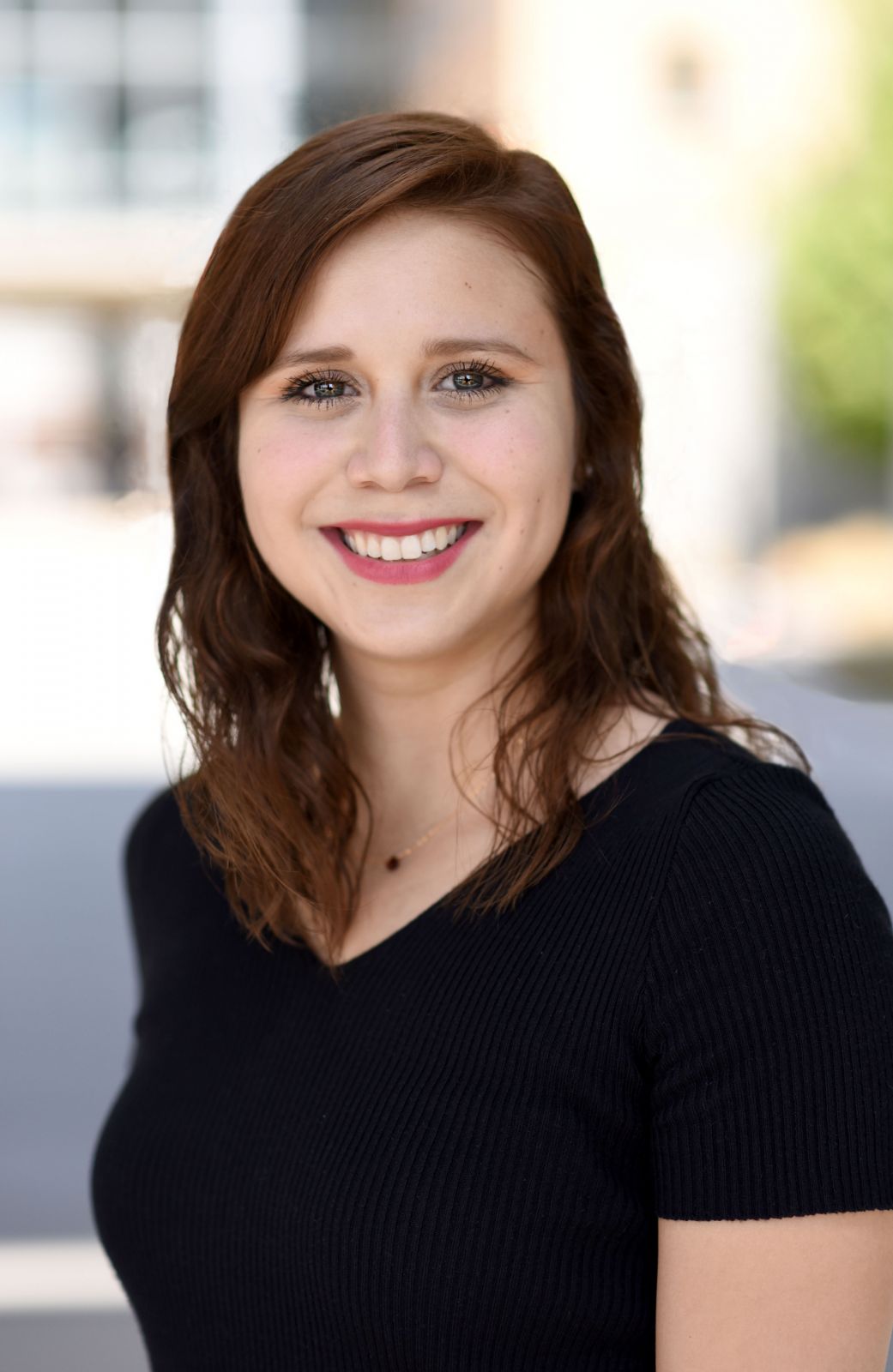UNIVERSITY OF CALIFORNIA MERCED
preservation
of the past.
conservation
for the future.
From engineering archaeology in
an ancient Mesoamerican city to
climate-change and the Natural
Reserve System, UC Merced's impact
goes far beyond the Valley
when it comes to looking at the past,
students and researchers are now looking to the future –
the technological future
PRESERVING THE PAST FOR THE FUTURE
ENGINEERING ARCHAEOLOGY
When it comes to looking at the past, students and researchers are now looking to the future — the technological future.
Just ask world heritage Professor Nicola Lercari, from the School of Social Sciences, Humanities and Arts. He’s incorporating 3-D reconstructions, GIS and spatial analysis, remote sensing, augmented and virtual reality and robotics into his cultural heritage and humanities work.
By working with Professor YangQuan Chen, with the School of Engineering, and the students in Chen’s Mechatronics, Embedded Systems and Automation (MESA) Lab, Lercari and his team used drones, airborne laser-scanning technology, digital sensors and photography to digitally preserve an historic California ghost town turned state park.
From individual artifacts to the park’s topography, the archaeologists, land surveyors and drone operators captured a level of detail that was previously unimaginable as they created a 3-D reconstruction of the naturally decaying town of Bodie.
Now, students will be able to study Bodie long after it’s gone, the same way they can now tour places like Palenque, the ancient Mesoamerican city that flourished at the peak of the Maya civilization — without ever leaving the second floor of the UC Merced Library.
The Library CAVE is a smaller version of UC Merced’s Wide-Area Visualization Environment (WAVE) system, a 20-screen VR multiplex that allows researchers to navigate interactive 3-D renderings of complex structures. The WAVE is a powerful tool that can be used to explore everything from ancient ruins or to the inner structure of the brain.
The CAVE and WAVE are research and teaching tools that helps students better understand standard techniques in archaeological analysis — including methods for finding, reconstructing and interpreting historical sources, as well as computer-aided design techniques more commonly associated with architecture and engineering.
the wave — a 20-screen
virtual reality multiplex
that allows researchers
to navigate interactive
3-d renderings of
complex structures
Students navigate UC Merced's Wide-Area Visualization Environment (WAVE)
California aims to lead the nation — and the globe
in climate change research, policy and action — in large part through climate-focused research conducted at University of California campuses and labs
CALIFORNIA AND CLIMATE CHANGE
local research. global impact.
California aims to lead the nation — and the globe — in climate change research, policy and action — in large part through climate-focused research conducted at University of California campuses and labs.
Some of that research, including from UC Merced, will be on display as climate-change scientists, policymakers and trailblazers from around the globe gather in San Francisco for the 2018 Global Climate Action Summit .
UC Merced School of Engineering professors Joshua Viers, LeRoy Westerling and Josué Medellín-Azuara and some of their graduate students will be there in support of the research they do, which is also recently highlighted in several prominent reports.
The professors and second-year graduate student Vicky Espinoza helped write the San Joaquin Valley section of the Fourth California Climate Change Assessment . The Assessment supports California’s continued leadership on actions to address climate change and safeguard the state’s people, economy and resources by providing tools for decision making and supporting these decisions with sound science.
This compilation of original climate research includes 44 technical reports and 13 summary reports on climate-change impacts to help ready the state for a future punctuated by severe wildfires, more frequent and longer droughts, rising sea levels, increased flooding, coastal erosion and extreme heat events.
The most recent Assessment suggests these events will worsen in the future.
The California-focused Assessment will feature prominently at the global summit, which brings together state and local governments, businesses and citizens from around the world to showcase climate action taking place in support of the 2016 Paris Climate Agreement. The agreement, signed by 175 countries, pledges to work toward keeping global warming well below 2 degrees Celsius, a temperature shift that could lead to severe consequences.
Summit participants will discuss the latest science documenting climate change’s effects, including historic droughts, devastating wildfires, increasing frequency of torrential storms, extreme heat, the death of millions of trees, billions of dollars in property damage, and threats to human health and food supplies, and how communities can take the most urgent actions, such as reducing emissions and achieving a carbon-neutral global economy.


“My research seeks to improve regional water and economic security for disadvantaged communities through the use of geospatial technology and informatics. This research will provide insight into sustaining California’s food-energy-water sector and into innovative approaches to policy and technology in California and beyond.”
-vicky espinozA, graduate student

Environmental Systems graduate student Espinoza will receive a special honor, as she was selected as a finalist for the ImagineH2O fellowship for innovation in California water-energy systems as part of the Water Pavilion segment of the Global Climate Summit.
She will be a guest at the Water Pavilion and take part in a special dinner roundtable discussion, where she’ll talk about her dissertation project.
Viers nominated her, citing her applied research experience at Argonne National Laboratory, NASA Jet Propulsion Laboratory and the UC Water Academy ; her engagement with the community through volunteering, mentoring and tutoring; and because of her project, a potential solution to the subject of regional groundwater management. “Vicky has identified a technologically innovative approach to suggest where agricultural production can optimally persist to meet water availability constraints and minimize local socioeconomic impacts,” Viers wrote in his nomination.
Espinoza said she aims to understand the full implications of the state’s Sustainable Groundwater Management Act, including its effects on the San Joaquin Valley’s irrigated lands and how proposed land-use changes will affect already socioeconomically vulnerable communities within the region.
“My research is transdisciplinary in that it seeks to improve regional water and economic security for disadvantaged communities through the use of geospatial technology and informatics by using new, deep-structured learning techniques on heterogeneous data,” she said. “This research, now in its formative stages, will provide insight into sustaining California’s food-energy-water sector and into innovative approaches to policy and technology in California and beyond.”
The San Joaquin Valley-focused regional segment of the statewide Assessment Espinoza helped author is just one of a series of reports being released before, during and after the summit, underlining various ways to address climate change. Medellín-Azuara led one study on statewide agricultural adaptation to climate change that also became part of the Assessment.
Another recent contribution is the “Managing Drought in a Changing Climate: Four Essential Reforms,” written by Medellín-Azuara and Viers for the Public Policy Institute of California.
the rolling grasslands that extend into
the foothills are part of the grant that
provided land for the campus through
the David and Lucille Packard Foundation
and the Virginia Smith Trust
UC NATURAL RESERVE SYSTEM
rolling grasslands and rare vernal pools
When we say conservation is part of the DNA of UC Merced, we’re talking about aspects of the campus that have existed since the beginning or even before — like the protected land to the northeast.
Set aside in 2001, the rolling grasslands that extend into the foothills are part of the grant that provided land for the campus through the David and Lucille Packard Foundation and the Virginia Smith Trust.
Besides the 2,000 acres for campus, there’s a 6,500-acre parcel of sensitive land — home to endangered species, ancient soils and rare vernal pools — that has since become part of the UC Natural Reserve System.
The land on which the Merced Vernal Pools and Grassland Reserve sits will never be developed. There will always be cows on the land because they help keep down the invasive plant species and they contribute to the maintenance of the vernal pools, where the endangered fairy shrimp reappear each spring.
The land is used for research, and helps scientists better understand the ecosystems, the soils, water flow and storage and even ancient cultures as old archaeological sites are discovered.
Plans call for an eventual visitor center on campus where people can learn more about the land and its conservation, and naturalist-led guided tours are offered from time to time throughout each year so the public can get a better understanding of the value of this rich treasure.
The land is used for research, and helps scientists better understand the ecosystems, the soils, water flow and storage and even ancient cultures as old archaeological sites are discovered.

